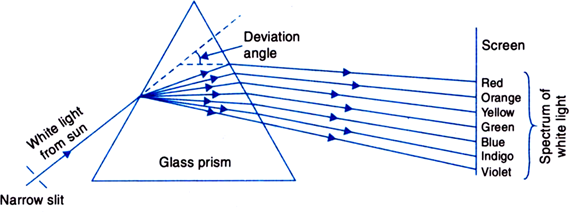The phenomenon of dispersion is a captivating aspect of optical physics, particularly in the context of lenses. When light traverses different media, it undergoes varying degrees of refraction, resulting in a spectrum of colors, as famously demonstrated by Newton’s prism experiments. Understanding the dispersive power of a lens is crucial, not only for application in optical devices but also for unraveling fundamental principles that govern light-matter interactions.
Dispersion, at its core, refers to the separation of light into its constituent spectral colors when passing through a medium. A lens, which is typically designed to converge or diverge light rays, exhibits dispersive characteristics depending on its material composition and the wavelength of light. This property is quantified as the dispersive power of the lens, defined as the degree to which a lens can separate light into its constituent colors. A higher dispersive power indicates a greater ability to disperse light, which can have significant implications in optical design and functionality.
To develop a comprehensive understanding of the dispersive power of a lens, we must delve into several interrelated components: the nature of light, the mathematical foundations of refraction, and the material properties of lenses.
First, it is pertinent to consider the nature of light. Light behaves both as a wave and as a particle, a duality that plays a substantial role in how it interacts with different materials. Wave optics explains how variations in the wavelength can lead to differential refraction; shorter wavelengths (blue light) bend more sharply than longer wavelengths (red light) when passing through a lens. This fundamental characteristic of light leads to the manifestation of chromatic aberrations—defects that can compromise the clarity and precision of an image produced by a lens.
The quantitative analysis of dispersion is often articulated through the lens maker’s equation, which relates the focal length of the lens with its curvatures and the refractive index of the material used. The refractive index itself is a dimensionless number that describes the speed of light in a medium versus its speed in a vacuum, typically denoted as ‘n’. It is this refractive index that varies with wavelength, imparting a unique dispersive power to specific lenses, hence necessitating the exploration of different optical materials.
Materials such as crown glass and flint glass are commonly used in lens fabrication, each possessing distinct refractive indices and dispersive properties. Crown glass, characterized by a lower refractive index, exhibits minimal dispersion, making it suitable for applications requiring less chromatic aberration. In contrast, flint glass has a higher refractive index and greater dispersive power, rendering it useful for creating achromatic lenses that minimize the impact of chromatic aberrations by strategically combining different glass types.
The dispersive power of a lens also finds its significance in devices like cameras, telescopes, and microscopes, where clarity and precision are paramount. The interplay of multiple lenses, known as compound lenses, allows optical engineers to tailor the dispersive characteristics of a system, leading to enhanced performance. The careful selection and arrangement of lenses can mitigate the adverse effects of dispersion, allowing for sharper focus across various wavelengths of light.
Moreover, the application of the dispersive power of lenses extends beyond traditional optics. In the realm of spectroscopy, for instance, precise dispersion is essential for analyzing the spectral composition of light emitted or absorbed by substances. This analytical technique is pivotal in a myriad of scientific fields, including chemistry, astronomy, and environmental science. It provides insights into molecular structures, the composition of distant stars, and the detection of pollutants in the atmosphere—all through the lens of dispersion.
The advancement of technologies such as photonic devices and fiber optics further underscores the importance of understanding dispersive power in lenses. In optical communication, achieving minimal signal distortion involves considering wavelength-dependent dispersion—a concept that is inextricably linked to the design of lens systems used in fiber optic cables. By leveraging the principles of dispersion, engineers can optimize signal integrity over vast distances, transforming how information is transmitted across the globe.
Thus, the study of the dispersive power of lenses interweaves intricate scientific principles with innovative applications. It promises an enigmatic shift in perspective, propelling inquisitive minds to investigate how seemingly straightforward optical devices can possess profound implications for technology and our understanding of light itself. Each lens, with its unique dispersive attributes, opens a window into the colorful spectacle of the physical world, inviting continual exploration and learning.
In conclusion, grasping the concept of dispersive power is not merely an academic exercise; it is an exploration of the fundamental nature of light and its interactions with matter. Through understanding dispersion, one can appreciate the nuanced intricacies of optical systems, the art and science of lens design, and the expansive horizons such knowledge can unlock. As exploration in lenses continues, so too does the potential for uncovering new insights, innovations, and applications that can shape the future of optics and beyond.












